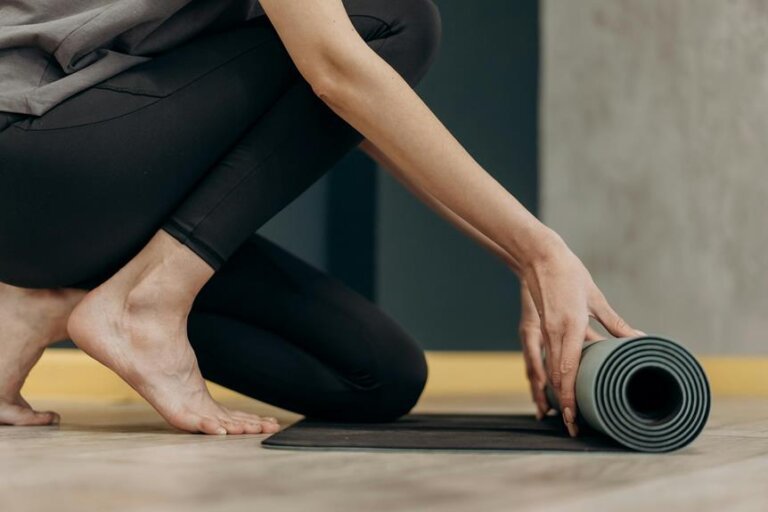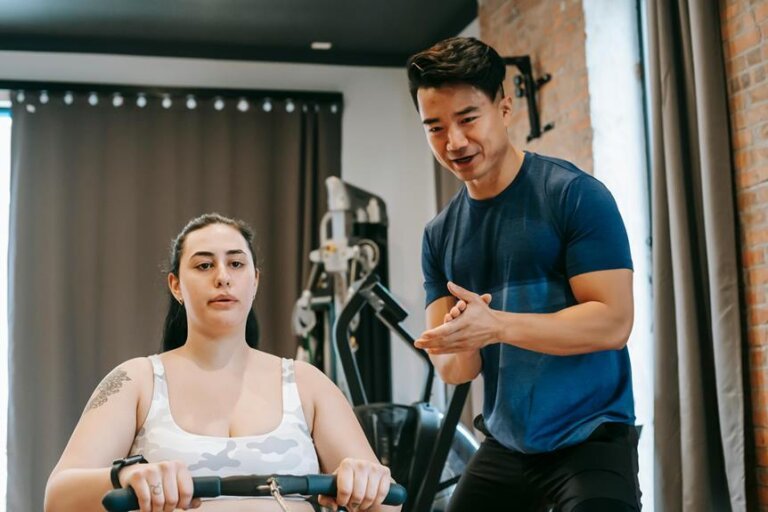Walking Your Way to Better Health: A Guide for Older Adults
Have you ever wondered if walking could be the key to improving your overall health as you age?
The benefits of walking for older adults are well-documented, but there's more to it than just putting one foot in front of the other.
From selecting the right footwear to incorporating strength training, this guide will provide you with essential tips to make the most out of your walking routine.
Stay tuned to discover how a simple daily walk can have a profound impact on your well-being.
Health Benefits of Walking
Walking boosts your overall well-being by enhancing cardiovascular health and strengthening muscles. It's a low-impact exercise that can help lower your risk of heart disease, high blood pressure, and stroke. Regular walking also improves circulation, reducing the likelihood of blood clots and varicose veins. Additionally, walking can aid in maintaining a healthy weight and reducing the risk of obesity, which is crucial for managing conditions like diabetes and arthritis.
Not only does walking benefit your physical health, but it also has a positive impact on your mental well-being. The fresh air and movement can help reduce feelings of stress and anxiety, while the release of endorphins during exercise can boost your mood and overall mental health. Walking regularly can also improve your cognitive function and memory, helping to keep your mind sharp as you age.
Incorporating walking into your daily routine is a simple yet powerful way to enhance your health and quality of life. Whether it's a brisk walk in the park or a leisurely stroll around your neighborhood, the benefits of walking are numerous and accessible to all.
Importance of Proper Footwear
When it comes to walking for better health, proper footwear is key to preventing discomfort and injuries.
Make sure your shoes fit well and have a supportive arch design to maintain proper foot alignment and reduce strain.
Choosing the right shoes can significantly enhance your walking experience and overall well-being.
Shoe Size Matters
Wearing the correct size of shoes is crucial for ensuring comfort and preventing foot-related issues during your walking routine. Ill-fitting shoes can lead to blisters, calluses, and even more serious problems like bunions or plantar fasciitis.
When selecting walking shoes, make sure there's about a thumb's width between your longest toe and the end of the shoe. Your shoes should also be wide enough to accommodate the natural expansion of your feet while walking. Remember that shoe sizes can vary between brands, so always try them on and walk around to ensure a proper fit.
Investing in shoes that fit well will go a long way in keeping your feet happy and healthy during your walks.
Supportive Arch Design
Invest in walking shoes with a supportive arch design to ensure proper foot alignment and reduce the risk of discomfort or injury during your walks. The arch of the foot plays a crucial role in absorbing shock and supporting your body's weight while walking.
Shoes with proper arch support help distribute pressure evenly across your feet and maintain the natural alignment of your foot, reducing strain on muscles and joints. By choosing footwear with a supportive arch design, you can improve your walking posture, decrease the likelihood of developing conditions like plantar fasciitis or shin splints, and enhance overall comfort during your exercise routine.
Prioritizing proper arch support in your walking shoes is a simple yet effective way to promote foot health and enjoy your walks to the fullest.
Stretching Exercises Before Walking
Before starting your walk, it's essential to incorporate stretching exercises to warm up your muscles and improve flexibility. Stretching helps prepare your body for physical activity, reducing the risk of injury and muscle strain. Focus on major muscle groups such as your calves, thighs, hips, and lower back. Perform gentle stretches like calf raises, hamstring stretches, hip flexor stretches, and torso twists. Hold each stretch for about 15-30 seconds without bouncing, and remember to breathe steadily throughout.
Engaging in dynamic stretches like leg swings or arm circles can also help increase blood flow and range of motion. These movements mimic the actions you'll be doing while walking. Additionally, consider incorporating balance exercises to enhance stability and prevent falls during your walk.
Setting Realistic Walking Goals
To make progress in your walking routine, it's important to set achievable and realistic goals. Start by assessing your current fitness level and determining how often you can commit to walking each week. Setting a specific goal, such as walking for 30 minutes, three times a week, can help you track your progress and stay motivated.
When setting your walking goals, consider your health and any physical limitations you may have. It's essential to listen to your body and gradually increase the intensity and duration of your walks to avoid injury. Remember, progress takes time, so be patient with yourself as you work towards your goals.
To keep yourself accountable, consider tracking your walks in a journal or using a fitness app. Celebrate your achievements along the way, whether it's reaching a certain distance or walking for a longer period than before. By setting realistic walking goals and staying consistent, you'll be on your way to better health and improved fitness.
Safety Tips for Walking Outdoors
When walking outdoors, prioritize your safety by following these essential tips. First, always wear appropriate footwear with good grip to prevent slips and falls.
Additionally, choose well-lit paths and wear bright or reflective clothing to increase visibility, especially during low-light hours. It's crucial to stay aware of your surroundings, so avoid distractions like using your phone or wearing headphones at a high volume. Stay alert to potential hazards such as uneven surfaces, obstacles, or changes in terrain.
Inform someone about your walking route and estimated return time for added security.
Carrying identification and a phone with you is important in case of emergencies. Stay hydrated and protect yourself from the sun by wearing sunscreen and a hat. In case of extreme weather conditions, such as heavy rain or thunderstorms, it's best to postpone your walk.
Lastly, trust your instincts – if a situation feels unsafe, alter your route or head back home. By following these safety tips, you can enjoy your outdoor walks while minimizing risks.
Incorporating Strength Training
To enhance your overall fitness and physical well-being, consider incorporating strength training into your walking routine. Strength training is essential for older adults as it helps maintain muscle mass, bone density, and overall strength, reducing the risk of falls and injuries.
To start, try incorporating bodyweight exercises like squats, lunges, and push-ups into your routine. As you progress, you can add resistance bands or light weights to increase the challenge.
Strength training can be done on the same days as your walks or on alternate days to give your muscles time to recover. Aim for at least two days of strength training per week, focusing on all major muscle groups. Remember to warm up before each session and cool down afterward to prevent injury and reduce muscle soreness.
Monitoring Progress and Adjusting Routine
As you continue walking for better health, it's important to monitor your progress by tracking fitness milestones.
If you notice you're not feeling challenged enough or are experiencing discomfort, consider modifying your exercise intensity.
Additionally, be prepared to adapt your routine to accommodate any physical changes you may encounter along the way.
Tracking Fitness Milestones
Keeping track of your fitness milestones is crucial for monitoring your progress and making necessary adjustments to your routine. Set specific goals like increasing your daily step count or walking distance.
Use a fitness tracker or journal to record your achievements. Tracking your milestones allows you to see how far you've come and what areas need improvement.
Celebrate each milestone reached, whether it's walking a certain distance or sticking to your routine for a set period. If you notice a plateau in progress, it might be time to switch things up.
Adjust your routine by adding new challenges or increasing intensity. By monitoring your fitness milestones, you can stay motivated and continue improving your health.
Modifying Exercise Intensity
Adjusting your exercise intensity is essential for monitoring your progress and ensuring continued improvement in your routine. As you become fitter, it's important to challenge yourself by increasing the intensity of your walks.
One way to do this is by walking faster or incorporating short bursts of brisk walking into your routine. Pay attention to how your body responds to these changes. If you find yourself getting out of breath too quickly or experiencing discomfort, consider dialing back the intensity slightly.
On the other hand, if you're not feeling challenged enough, it may be time to ramp up the intensity. By adjusting your exercise intensity accordingly, you can continue to make progress and reap the benefits of your walking routine.
Adapting to Physical Changes
To effectively adapt to physical changes, it's crucial to closely monitor your progress and make necessary adjustments to your walking routine. Keep track of how you feel during and after walks. If you experience increased fatigue, pain, or shortness of breath, consider reducing the duration or intensity of your walks.
On the other hand, if you find your current routine too easy, challenge yourself by increasing your walking speed or distance gradually. Remember to listen to your body and consult a healthcare provider if you have any concerns.
Adapting your walking routine to accommodate physical changes will help you continue reaping the numerous health benefits that walking provides as you age.
Frequently Asked Questions
Can Walking Help Improve Cognitive Function in Older Adults?
Yes, walking can improve cognitive function in older adults. It boosts blood flow to the brain, enhances memory, and supports overall brain health. Regular walks can help you stay sharp and focused as you age.
How Can Older Adults Prevent Blisters and Calluses When Walking Regularly?
To prevent blisters and calluses when walking regularly, make sure your footwear fits properly and is comfortable. Wear moisture-wicking socks and consider using cushioned insoles. Keep your feet clean and dry to reduce friction.
Is It Necessary to Consult With a Healthcare Provider Before Starting a Walking Routine?
Like a compass guiding your journey, consulting a healthcare provider before starting a walking routine is essential for a safe and tailored experience. They can offer personalized advice and ensure your health needs are met.
What Are Some Tips for Staying Motivated to Continue Walking Regularly?
To stay motivated to walk regularly, set achievable goals, vary your routes, listen to music or podcasts, find a walking buddy, reward yourself for milestones, and track your progress. Consistency and enjoyment are key.
Are There Any Specific Walking Techniques or Forms That Older Adults Should Be Aware of to Prevent Injury?
To prevent injury, older adults should be mindful of maintaining proper posture, taking shorter steps to reduce strain, and wearing supportive footwear. Stay safe by warming up, staying hydrated, and listening to your body's limits.
Conclusion
So, keep putting one foot in front of the other and watch your health improve with each step.
Remember, just like Dorothy in The Wizard of Oz, you have the power to change your own path to a healthier lifestyle by simply walking.
Stay committed, stay motivated, and keep moving forward towards better health.
You got this!




